
Dealing with Spongy Moth Around Your Home or Property
April 27, 2022 - Deborah McCullough
Spongy moth (Lymantria dispar, formerly gypsy moth) is an important invasive pest of many forest and shade trees in Michigan and across much of the northeastern United States. This foliage-feeding insect, which is native to Europe, was introduced into Massachusetts in 1869 by a misguided naturalist. Spongy moth has been slowly spreading across the U.S. and Canada. The first spongy moth outbreaks in Michigan occurred in the mid-1980s in Midland and Clare counties in the central part of Lower Michigan. Since then, spongy moth has become established in all Michigan counties and most of the state has experienced one or more spongy moth outbreaks.
The spongy moth can be an annoying pest in residential, urban and rural areas as well as forests. Spongy moth caterpillars, the immature “larval” stage, feed on the leaves of more than 300 species of trees. They especially like oaks but many other trees are also good hosts. During an outbreak, the density of spongy moth caterpillars can be so high that many host trees are heavily or even completely defoliated. The abundance of large, hairy caterpillars and the resulting rain of frass (fecal pellets) from infested trees is unpleasant and can be distressing, especially for people who have not experienced a spongy moth outbreak before.
Here are frequently asked questions and answers by residents during spongy moth outbreaks.
How do I know if I have spongy moth feeding on my trees?
Many insects will feed on tree leaves, but there is only one spongy moth. Spongy moth caterpillars have pairs of red and blue spots along the back and long, dark hairs. They feed on leaves of oaks and other preferred host trees including aspen, apple, basswood, birch, crabapple, willow and many other types of trees in early and mid-summer, usually from mid- or late May until early July.
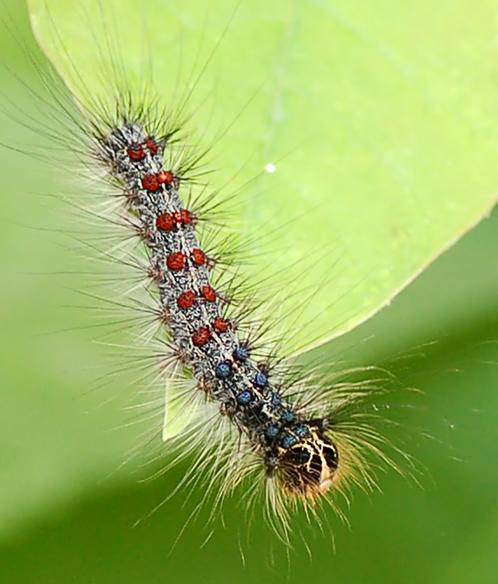
Eastern tent caterpillar (Malacosoma americana F), for example, is a native insect that makes silk tents in apple, crabapple and cherry trees. It feeds early in spring but rarely causes severe defoliation.

Fall webworm (Hyphantria cunea F), another native insect, feeds in late summer and fall on many different species of hardwood trees. The light colored caterpillars wrap silk webbing around leaves as they feed. Although the large webs can be unsightly, the late summer defoliation does not affect the tree’s health.
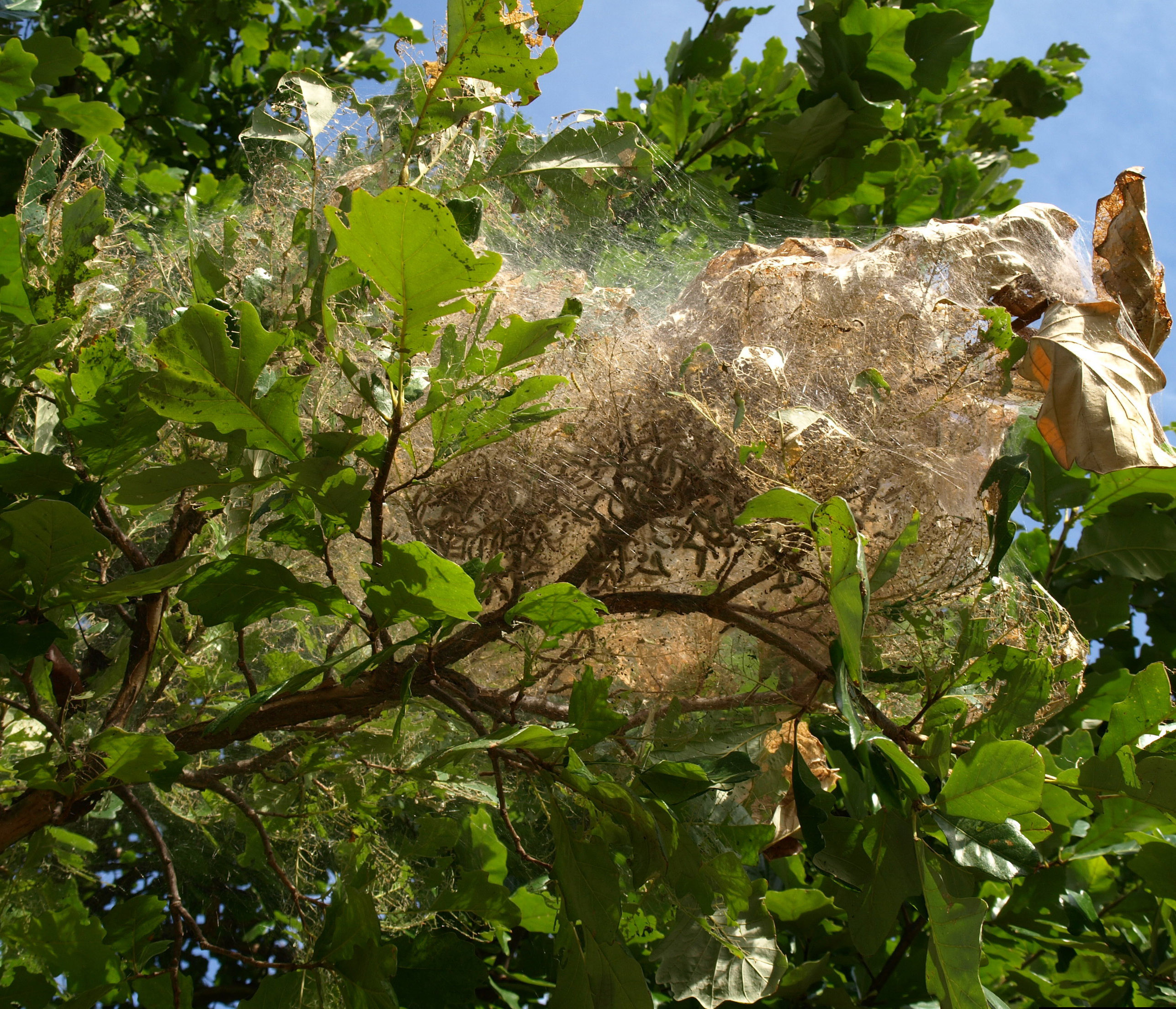
Spongy moth caterpillars spin reddish brown cocoons in late June or July. Over the next one to two weeks, the caterpillars develop into moths, a process called pupation. Many other insects feed on oak trees and are sometimes mistaken for spongy moth.
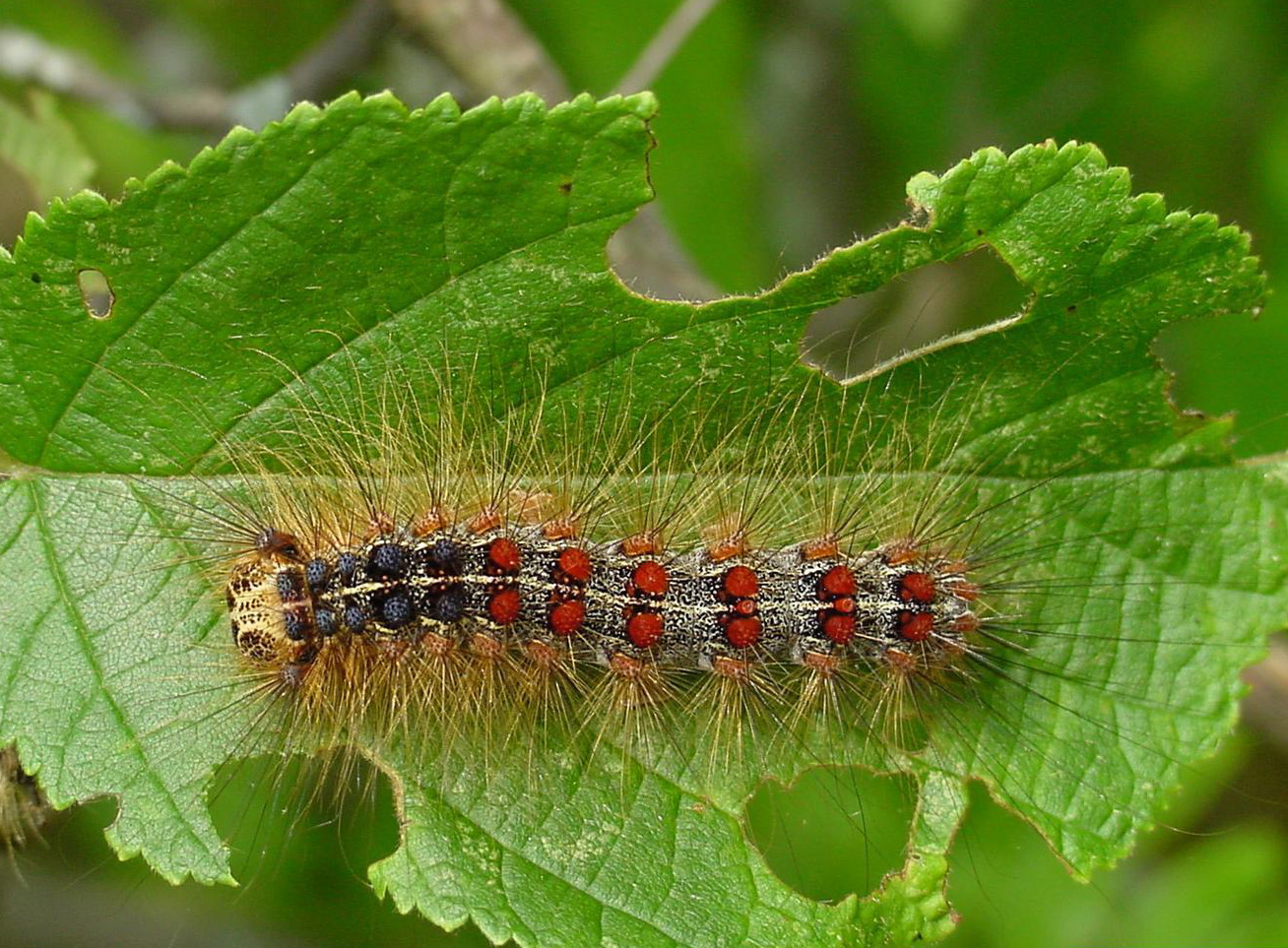
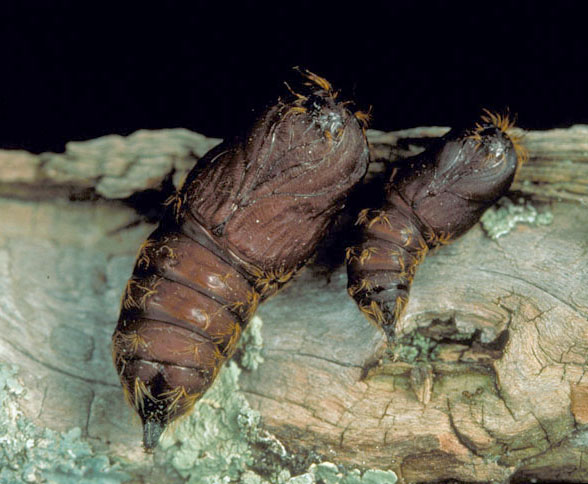
Adult moths emerge from cocoons, usually in July or early August. The moths live only a few days and do not feed. Adult males are brown with dark markings on the wings and are active fliers. Adult females have white wings with black chevron markings, but do not fly. Each female lays one tan egg mass, which she covers with a dense mat of tiny hairs from her body. Egg masses may be small, about the size of a quarter, or up to 3 inches long. Egg masses are laid in July or August, overwinter and hatch the following April or May.
View the MSU Enviroweather Spongy Moth Egg Hatch Prediction Model

Has spongy moth killed my tree?
An oak or other hardwood tree that is completely defoliated by spongy moth caterpillars may look as if it's dead. However, most of these trees will “re-flush” and produce a second set of leaf buds, usually by late July. This second set of leaves will provide enough energy for the tree to survive winter. Severe defoliation does stress the tree, but trees can usually tolerate even complete defoliation for a few years. If trees are affected by other stress factors such as severe drought, disease or poor growing conditions, there is a greater chance severe defoliation will lead to mortality.
Also, when conifer trees such as spruce, pine, fir and Douglas-fir are severely defoliated, they will probably die. Conifer trees produce buds in late summer and have no ability to re-flush if they are defoliated. Spongy moth caterpillars seldom feed on conifers unless populations are high and most of the leaves on oaks and other preferred hosts have already been consumed.
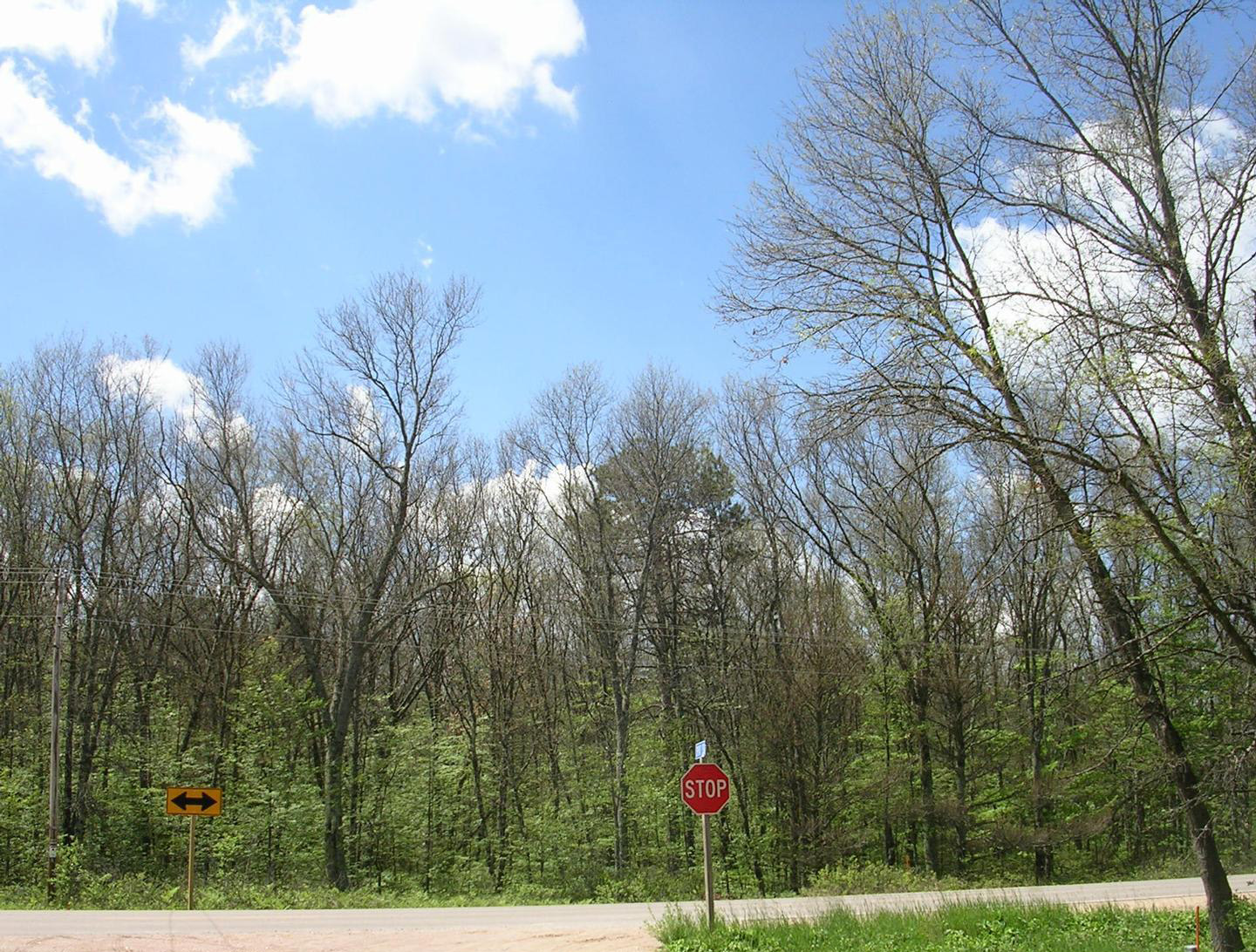
How can I keep my trees healthy?
Drought stress can be a problem for trees that are heavily defoliated. The best thing you can do for your trees is to water them once a week during dry periods in the summer and fall. Let a hose run slowly near the base of the tree for a few hours once a week. Alternatively, place a sprinkler between the trunk and the drip line of the canopy. Set an empty can or plastic container near the sprinkler and let the sprinkler run until an inch of water has accumulated in the container. Avoid compacting the soil or damaging the root system of trees, which can affect water uptake.
Also, be careful with lawn mowers, weed whips, snow shovels and other equipment. Wounds increase the risk that trees will become infected by disease.
Is there anything I can do to help reduce spongy moth in my yard?
You bet! Search for spongy moth egg masses on trees, firewood and outdoor furniture. Scrape egg masses into a bucket or similar container filled with soapy water, or burn or bury the egg masses. Don’t leave the eggs or bits of egg mass on the ground – those eggs can often hatch the following spring.
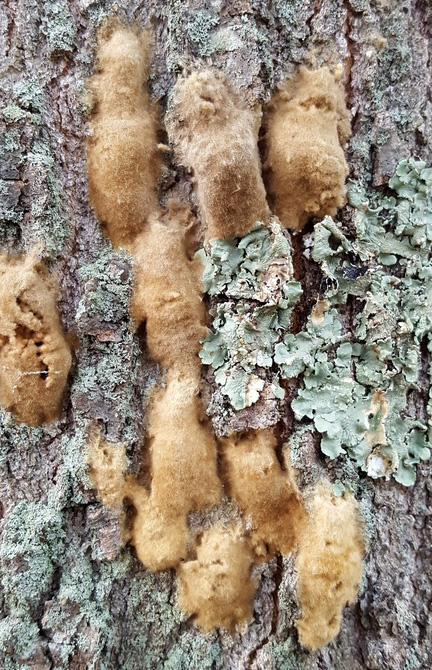
Will spongy moth pheromone traps help prevent or reduce defoliation?
No! Pheromone traps are used by scientists and pest managers to detect new spongy moth populations in uninfested areas. These traps, which are baited with the sex pheromone produced by female spongy moth, only capture male moths and will have no effect on the current or future spongy moth populations. Setting pheromone traps in Michigan, where spongy moth has been established for decades, will not affect the abundance of caterpillars, nor reduce defoliation this year or in future years.
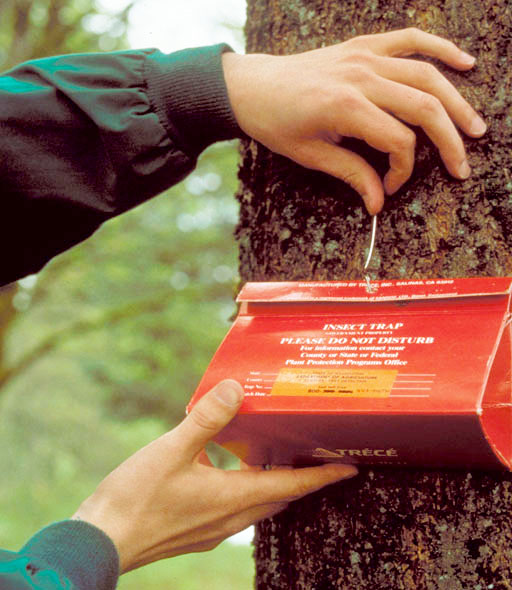
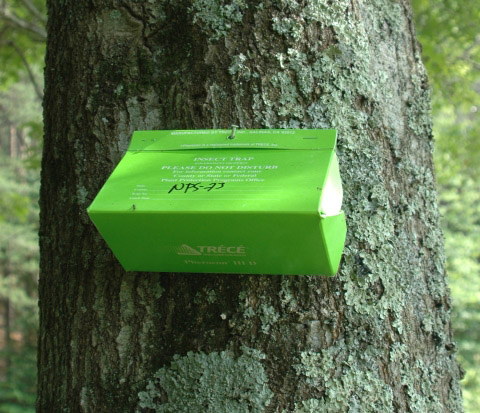
Many natural enemies including mice, some birds and predatory insects feed on spongy moth at various life stages. Several insect parasitoids, which are highly specialized types of wasps or fly species, attack spongy moth eggs, caterpillars or pupae. You can encourage these natural enemies by avoiding the use of broad-spectrum insecticides and providing habitat for birds and predators.
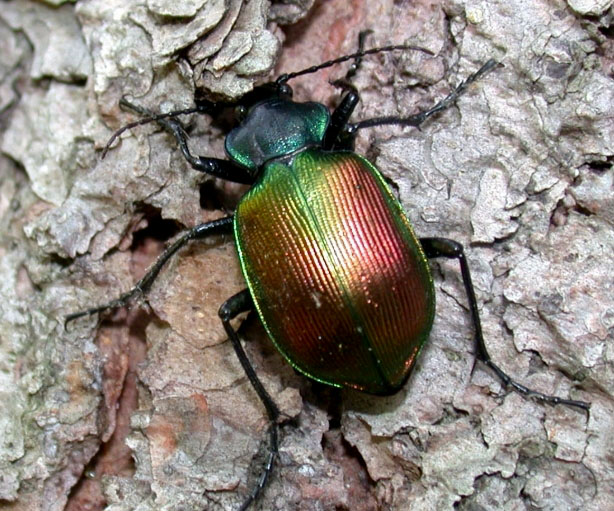
A virus disease (nucleopolyhedrosis virus, or NPV) that affects caterpillars usually causes Lymantria dispar outbreaks to collapse after two or three years of heavy defoliation. The spongy moth fungus Entomophaga maimaiga can also kill large numbers of caterpillars in some years.
Some residents use Bt (Bacillus thuringiensis var. kurstaki) to protect landscape trees from severe defoliation. Bt is applied by spraying leaves on the host trees one to two weeks after eggs have hatched. Young caterpillars are more vulnerable to Bt and controlling these early stages will protect trees from severe defoliation. Caterpillars must consume leaves that have been recently sprayed for the Bt to be effective; simply coming into contact with sprayed leaves will have no effect.
Bt is not harmful to humans or other mammals, birds, fish or other animals. Bt products, which are approved for organic farms and gardens, also have little impact on beneficial insects, including predators, parasitoids and pollinators. You can spray Bt yourself or hire a professional arborist or tree care service to spray trees. If your trees are large, it is often a good idea to hire professionals who have equipment to get the Bt into the canopy where the caterpillars will feed. For more information about using Bt, see our publication “Btk: One management option for spongy moth.”
View the MSU Enviroweather Spongy Moth Egg Hatch Prediction Model
Several types of conventional insecticides can be used to control spongy moth caterpillars on landscape trees. It is best to apply any insecticide when caterpillars are young to limit defoliation. Many conventional insecticide products are applied by spraying the host trees where the caterpillars are feeding. This can be effective but will likely affect non-target species including beneficial insect predators, pollinators and parasitoids.
Other types of insecticides are injected into the base of the trunk of a tree. Trees transport the insecticide up the trunk to the leaves where the spongy moth caterpillars are feeding. Insecticide products with the active ingredient emamectin benzoate, for example, should effectively control spongy moth. Check with MSU Plant & Pest Diagnostics if you have questions about whether a specific insecticide product will control spongy moth.
Will I have to deal with spongy moth next year?
Spongy moth populations typically remain high for two to three years then collapse and return to low levels. This population collapse usually is the result of a virus disease called NPV that affects spongy moth caterpillars. When populations are high, the caterpillars compete with one another for food and resting spots. Stressed caterpillars become more susceptible to the NPV disease. After a year or two of heavy defoliation, the NPV disease, in combination with a fungal disease and other natural enemies, will generally control the outbreak. Spongy moth populations usually remain at low levels for five to 10 years and sometimes longer. Eventually, some factor triggers another outbreak and a new cycle begins.
For more information, see the page: A Virus and a Fungal Disease Cause Spongy Moth Outbreaks to Collapse.
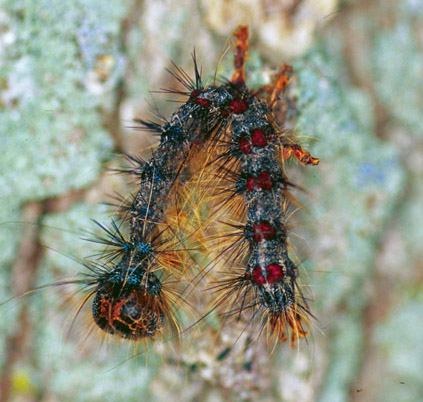
Can't we just get rid of ALL the spongy moth?
Nope. Spongy moth is here to stay and is a part of Michigan's forest and urban forest ecosystems. You can, however, help keep spongy moth from spreading into states that are not yet infested. Spongy moth females like to lay their egg masses in dark, protected locations such as the underside of lawn chairs or picnic tables or on firewood. Egg masses may also be found on recreational vehicles or trailers or in the wheel wells of cars.
Accidentally transporting egg masses to a new location can result in a new spongy moth population that will cause headaches for other people. Be sure you know what a spongy moth egg mass looks like. Inspect firewood, vehicles, lawn furniture and other outdoor items that might have egg masses before moving them out of state. If you find egg masses, scrape them off into a bucket of soapy water or burn or bury them.
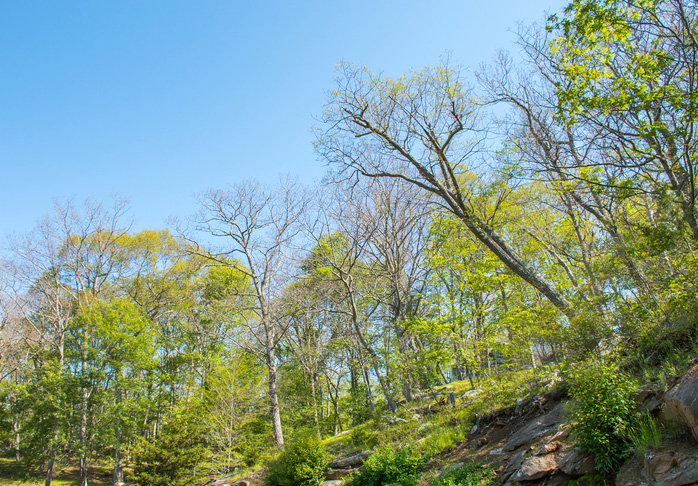



 Print
Print Email
Email





